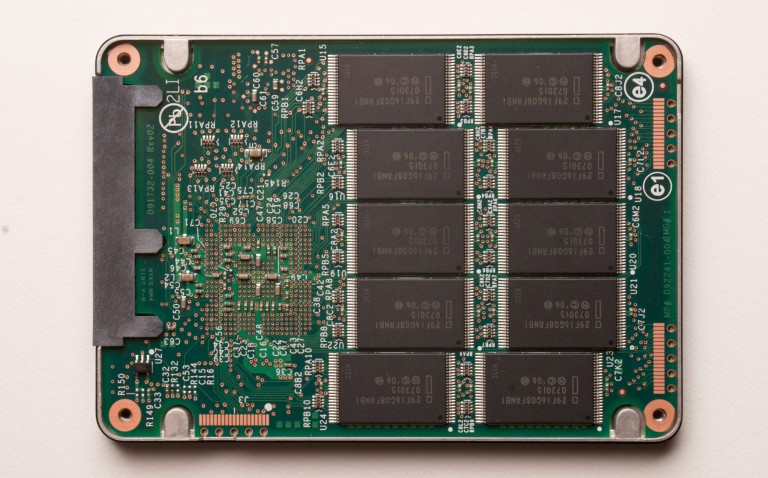
This article is about how flash-based Solid-State Storage Drives, or SSDs, mass storage devices are designed and manufactured. A Solid-State Drive (SSD) is a type of data storage device that uses integrated circuit assemblies in silicon memory to store data persistently. However it has no "drive" or motor, nor any actual moving parts. Pretty much just infinitesimally small electrons move around in a SSD drive. As of 2015, most SSDs use NAND-based flash memory, which retains data without power. Some major milestones have been: At Cebit 2009, OCZ Technology demonstrated the first 1 Terabyte (TB) flash SSD using an 8x PCI Express interface. It displayed a maximum write-speed of 654 megabytes per second (MB/s) and maximum read speed of 712 MB/s. In December 2009, America’s Micron Technology announced a SSD using a 6 giga-bits per second (Gbit/s) SATA connection interface. Here is a short video view into a Micro SSD factory: https://www.youtube.com/watch?v=PK-fXJnR5K0 Just 1G of storage take over 8 Billion transistors all wired up precisely without 1 wire out of place. As there are 3 wires for each memory cell, that is a sum total of 24 billion microscopic wires to make up 1GB of storage. Yet SSDs even come in 1TB, or Terabyte capacities. There are 8TB of SSDs available on the market today. So multiply 24 billion by another 1000, as 1000 gigabytes = 1 TB, so that is 8 billion transistors and 24 Trillion wires in our Enterprise Flash Drives (EFD - another name for Enterprise hosting grade SSDs). read_more Most of the advantages of SSDs over regular hard drives is due to a SSD’s ability to read and write data completely electronically instead of electro-mechanically; which allows for incredibly fast access and transfer speeds and shock proof reliability. The only advantage hard disks offer is a much reduced price for their capacity. While the price of SSDs have continued to lower over time, SDs are still roughly 6-7 times more expensive per gigabyte than hard drives. Susceptibility to magnetic fields is very low for SSDs as well. Low impact on flash memory SSD technology uses connection interfaces entirely compatible with standard block input/output (I/O) hard drives;...





